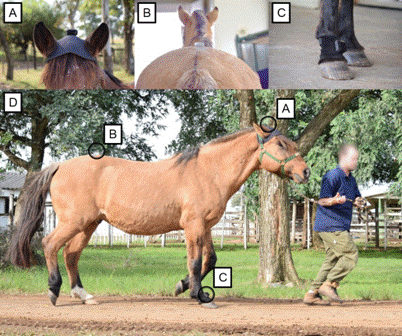ABSTRACT:
Equine-assisted therapy is a method used since ancient times to rehabilitate individuals. The biomechanics provided by horses and the friction between their back and the riders’ saddle generate impulses that are transmitted to riders’ central nervous system; thus, these horses must be healthy enough to enable the desired therapeutic effect. The aim of the current study is to investigate lameness prevalence and intensity in equine-assisted therapy horses in Rio Grande do Sul State. The adopted methodology consisted of the objective evaluation of lameness based on Lameness Locator® wireless inertial sensors, which were placed in the 21 horses assessed in six equestrian centers in Rio Grande do Sul State. Results have shown that 90.1% of the assessed horses presented lameness in the hind (54.2%) and forelimbs (45.8%), as well as that 72% of them with presented mild lameness degree. This outcome has evidenced the need, and significance, of assessing these horses’ locomotor system. To support effective therapy and protect equine welfare, it is essential that veterinarians should regularly monitor these animals in order to treat and prevent disease. Even subtle lameness can influence the generated stimuli; thus, it is an important factor to be taken into consideration when selecting equine-assisted therapy.
Key words:
horse riding; inertial sensors; Lameness LocatorTM; animal assisted therapy

 Thumbnail
Thumbnail
 Thumbnail
Thumbnail
 Thumbnail
Thumbnail
 Thumbnail
Thumbnail
 Thumbnail
Thumbnail
 Thumbnail
Thumbnail





